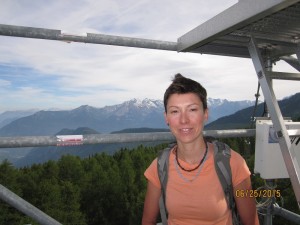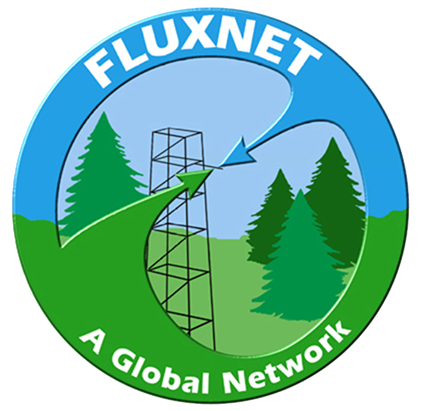This is the start of a series to interview scientists in FLUXNET. Today, we start with Marta Galvagno, whom I met this summer and who was gracious to give me a tour of her field sites. Marta works for the Environmental Protection Agency of the Aosta Valley in Italy. She is PI of the Torgnon alpine meadow site and a larch site in the Alps.

How did you get involved measuring eddy fluxes?; What was your route, mentors and what motivated you?
In 2008, I started my Ph.D. in a regional agency for environmental protection in the Alps, where I’m still working now. My colleagues were already working with the University of Milano-Bicocca on topics as plant phenology and remote sensing, therefore, the eddy fluxes have been the step forward to improve our understanding of the ecosystem-climate feedbacks. As a biologist, I have been motivated by the plethora of physiological questions that may be addressed by this technique. Nevertheless, being not involved in an established eddy covariance research group, nor having followed a course at University on eddy fluxes, my route has been quite challenging and for this reason, many people have been crucial to grow my knowledges: for example, Mirco Migliavacca, first of all a friend, is the one who introduced me in eddy covariance theory and flux processing and never stops to give invaluable suggestions and support; Georg Wohlfahrt, mentor, collaborator and friend, is a constant source of motivation to improve my work and investigate new interesting faces of my research activity. Apart from mentors, I’m lucky to have colleagues who are always ready to share new ideas and help in solving issues.
What are the biggest challenges working in your environment in collecting, analyzing, interpreting or measuring fluxes?
I think that working in the Alps is priceless, nevertheless the mountain environment is challenging for several reasons, starting from complex terrains and fragmented nature which is prone to the development of discouraging conditions for micrometeorological studies. From a practical point of view, the remoteness of our ecosystems (a subalpine grassland a larch forest at 2100 m asl), without power line nor real-time data transmission makes it necessary to frequently visit the sites (which however has its positive aspects) for collecting data and checking instruments. Nevertheless, these challenges are useful to keep us motivated, since carrying on the goal of improving measurements in mountain sites will enhance our knowledge of these global, sensitive, and fascinating environments.
What new and exciting lessons have you learned from you studies?
I have the luck of working both on data processing, analysis, modeling and field activities. During these few years, I learned that sometimes it suffices to go out in the field, looking around you, observing the plants and the environment, to gather a clear understanding of a process you were analyzing for months or to get new exciting ideas for your research.
What new and different perspectives, observations or skills do you bring to the fluxnet community?
Because of global distribution of mountain environments, the Alps represent important natural laboratories to get information on how climate and human induced changes will impact the high-altitude ecosystems. The most important criteria which led us to choose our ecosystems was to add a new piece to the Fluxnet global puzzle. Grasslands are a typical ecosystem of worldwide mountains and because abandonment of managed lands will likely be frequent in the future, understanding the relationships between climate, land-use change and ecosystem in our abandoned grassland (IT-Tor) may bring important insights to the CO2 flux community. While at the Larch site (IT-Trf) we took advantage of this deciduous conifer to collect novel information on the relationships between leaf phenology and the carbon cycle in cold-climate forests.
How can Fluxnet best serve you?
Apart from the wide datasets that Fluxnet collects and makes available for regional or global synthesis studies, the lessons learned trough Fluxnet are a constant source of update and inspiration. I think that continuing the efforts that Fluxnet does towards the integration of flux data, satellite and field remote sensing, phenocamera, and models, is one of the most important goal for the carbon cycle community.
As a young mother how do you balance work and family?
My family is my life. Sometimes I would like to have more time to spend with them and sometimes I would need to have more time at work: I think it is this trade-off that makes me fully live the moments with children, learn giving them the best of our attention, ‘recalibrate’ myself and get the motivation to be focused the day after at work.
What advice do you have for young aspiring Fluxnetters?
To be part of a network one have to learn the importance of sharing data and results. But this is not a one way process, indeed, working, writing papers, planning projects together or just talking with other scientists, being them other young researchers, field experimentalists, modelers or instrument developers will enrich our skills, even, sometimes, doing some mistakes, which however allow us to grow up, professionally and personally.
